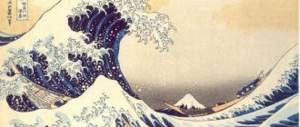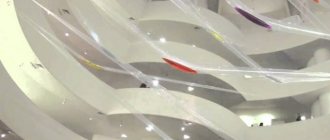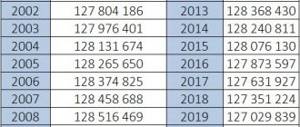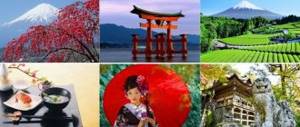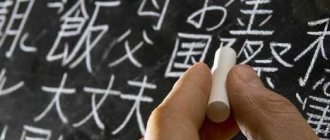Most of what we do or create today rarely goes beyond the boundaries of the computer. Yes, in general it’s cool, and technology has greatly simplified our lives, but sometimes you want to do something with your own hands. One way to feel good about creating something tangible is origami.
I think everyone knows what it is - creating figures from sheets of paper, to put it simply. Nowadays you will never meet a person who has not seen such a crane, which has long become a symbol of the ancient Japanese art of paper folding.
The history of origami
The origins of the origami technique can be observed not in Japan, but in China . In this country, they began to produce a material that is so simple for modern people - paper . The secret of making the material was kept in extremely strict confidence. There is a legend that already in the 7th century AD, a Chinese Buddhist monk named Dan Ho went on a visit to Japan, where he declassified the method of paper production. According to the official chronicle of Japan, these events took place in 610 AD. Centuries later, the people of Japan developed their own paper production technology, which is significantly superior to the Chinese one.
In Japan to this day, despite automation and modern technology, there is manual production of paper , which has unsurpassed quality, and it costs a lot of money. The material is so durable that it can withstand more than 100 folds.
The first book on origami techniques was published in Japan, it is called “Semba-tsuru-orikata”. Literally translated: “ How to fold a thousand cranes .” The entire book, indeed, is devoted to folding just one figure - a crane. The author of the publication was the rector of the Rokan temple.
Have you ever made figures from origami?
Not really
Already in 1845, another book “Kan-no malo” appeared, which in translation sounds like “ Window of Midwinter ”. The contents of the book are replete with dozens of diagrams, models and drawings for making the most popular origami figures. It was in this book that the diagram of folding a frog figure was first shown. In 1885, a new edition was published by Okamotu Konseki called Orikata . This book was subsequently translated into English.
In parallel, the art of origami also developed in other countries of the world, although no one managed to achieve such heights as in Japan.
They tried to document the folding of paper figures, but there are very few books from authors from other countries .
There is an opinion that origami reached the Arab countries only in the 8th century AD. Only paper came to Spain in the 11th century, not to mention the emergence of technologies for folding figures from it. Around the 11th century, origami began its development in Germany. Closer to the 17th century, basic origami models for this territory were already being created in Europe - hats, houses, boats. At the beginning of the 19th century, the famous Friedrich Froebel proposed introducing origami into the compulsory education process for kindergarten children, as it develops fine motor skills of the hands. Akiro Yoshizawa became a prominent person associated with origami . He proposed to designate the technique of folding paper figures in the form of diagrams, which are still used today. Folding even the most complex shapes with the help of conventional signs has become much easier. Yoshizawa showed the world the beauty of the art of transforming a flat sheet of paper into an attractive three-dimensional figure. When Japan began to accept foreigners in the 20th century, Europeans became familiar with the classic origami figures - crane, fish, frog and iris.
Modernity and new symbols
The new symbolism is simply a modern interpretation of the forgotten old. Not everyone understands Japanese philosophy and mythology, but everyone understands origami, which is transformed every time according to its time, but remains unchanged at its core.
This is one of the most honest arts, in which there is no room for pretense. If you smeared glue somewhere or used scissors, this is not origami, and you know it. It may be hidden from others, but you are not a master if you lie to yourself.
And the main thing in origami is that nothing is final. The same sheet of paper can be a frog, a flower, a dog, a portrait, a tree... The form is only final when the figurine becomes a gift.
After Hiroshima and Nagasaki, the famous crane acquired new meaning. Radiation sickness has made a person comparable in fragility to an origami figurine that cannot escape from fire. And even thousands of thousands of cranes did not save anyone, but they strengthened faith in humanity. And she can do a lot. Therefore, do origami, develop yourself, believe in the best!
What role does origami play in your life? Are there many masters or beginners among our readers? How do you feel about this art and what does it mean to you? It will be interesting to read your comments.
Origami is one of the famous cultural phenomena of Japan, but to get acquainted with other aspects, as well as the Japanese language, we recommend that you take our basic course.
Types and techniques of origami
Types of origami in the modern world have their differences. Basic techniques:
- The classic form of origami is usually thought of as folding a square sheet of paper into a figure without using scissors and glue.
- Modular origami involves assembling complex structures from individual parts.
- Kusudama is a type of modular origami. The essence of the technique is to assemble spherical figures from cone-shaped paper parts. To assemble the final figurine, the parts are usually simply stitched together. Using this technique, you can create stunning flower arrangements that often decorate the interior of your home.
Classic
Modular
Kusudama
There are also differences in the methods of folding the figures:
- A simple way is to use “valley” and “mountain” folds. This can make it easier to create origami for preschool children and people who have limited motor abilities.
- Pattern folding is applied using a drawing that is created in advance. All folds are marked on the diagram. When creating new models, it is Patterns that are used.
- Wet folding was invented by Yoshizawa. Thanks to the wetting of the paper when folding it, the lines are quite smooth. This option is preferable for creating flowers and animals. The resulting figures look as natural and similar to the original as possible.
Classic
Pattern
Wet
Set of forms
Of course, there is a set-base of shapes from which many figures are composed. In general, 15 forms can be distinguished and divided into: simple, medium, complex, pancake.
Simple:
- in the form of a book;
- in the form of a triangle;
- in the form of a kite;
- in the form of a door.
Average:
- in the form of a double triangle;
- in the form of a double square;
- in the form of a fish;
- in the form of a pancake.
Difficult:
- in the form of a catamaran;
- in the form of a frog;
- in the form of a house;
- in the form of a bird.
Pancakes:
- in the form of a pancake frog;
- in the form of a pancake double square;
- in the form of a water pancake bomb.
Scheme "Crane"
For example, consider the shape of the classic bird, because it is the basis for many beautiful shapes.
First, fold a double square and make folds at each corner, they are necessary so that the corners are inside. The result is a figure that vaguely resembles a bird; it serves as an impetus for imagination and offers a kind of rebus in which you have to decide what to do next.
Select the neck, making it thin, then proceed to the tail. The head is distinguished by the curving of the neck, wings and tail. You can grab the places marked with dots, stretch them slightly, and the crane will flap its wings.
Origami materials
For origami, you should purchase paper that will not form cracks after folding . The material must be absolutely clean and smooth, without creases. Standard children's colored paper or printing and copier paper are perfect. The material has differences in thickness, water resistance and other parameters. To create figures, you should not choose paper that is too thick, but thin paper will not work either.
For origami, you can use cardboard, wallpaper, drawing, newspaper, printing and velvet paper.
For some types of origami, scissors . It is desirable that they have already developed levers and rounded ends. When working with this tool, especially if a child is folding the figures, do not forget about safety precautions.
Additionally, for modular origami techniques, you should purchase glue . The adhesive composition should dry quickly, not spread, and have normal viscosity. Glue that leaves stains on the paper or eats away its color will not work. PVA glue would be an ideal option.
Editorial Voice
Irakli
Lord of Paper Sheets
Ask a Question
If you have a task to make a drinking cup out of paper, the material must be moisture resistant . To make the paper water-repellent, glue is added to it. This substance is present in any type of paper, only in some places there is less of it - the paper is immediately saturated with water, and in some places there is more of it - the liquid is repelled.
Classics of the genre
Paper cranes
A figurine resembling a crane is obtained from a paper square as a result of a series of successive folds. The paper crane is one of the symbols of Japanese culture, the most famous of the origami figures.
How to fold a paper crane
In Japan, the crane, along with the turtle, symbolizes longevity. An old Japanese proverb says: “A crane lives a thousand years, a turtle lives ten thousand.” Sembazuru (thousand cranes) is a garland of thousands of paper cranes, a traditional amulet that you can make yourself. When folding cranes for sembazuru, it is customary to think about those who will subsequently be presented with the garland - as a rule, these are people in need of a speedy restoration of physical and mental strength lost as a result of illness or an accident. Sembazuru is also a symbol of hope for a world without war.
Sembazuru garlands
Samurai helmet
The most important piece of military armor, the samurai kabuto helmet is one of the traditional decorations on Tango no sekku, “Children's Day,” which is celebrated on the fifth of May. Another symbolic decoration of this holiday, formerly called "Boys' Day", is the koi-nobori, a pole with cloth or paper carp tied to it, symbolizing success. On this day in Japan, the birth, growth and maturation of boys is celebrated. Festive origami for Tango no sekku - a large kabuto helmet, which is folded from newspaper and which, if desired, can actually be put on the head.
Helmets of all colors and sizes
How to fold a kabuto helmet
Paper boxes
Using the origami technique, you can make boxes for small items and even a trash can out of paper! If you use paper with a beautiful pattern, the boxes will turn out beautiful. And if you use newspapers or flyers as the material, you will get an excellent trash bin for organic waste, which can be thrown away along with the peels and skins of fruits and vegetables.
Boxes of all colors and sizes
Basic forms and their diagrams
A beginning origami master must master the basics of folding paper figures. Gradually your skill will increase. Proper crafts should have perfect folds. There are the main and most popular origami figures :
- snake;
- crane;
- swan;
- heart;
- airplane;
- boat
There are much more classic figures that are inherent in the origami technique. Many of the ultimate masterpieces made up of identical basic shapes, which should be collected at the initial stage. The figures are grouped according to these forms, which makes it possible to systematize a huge number of very diverse models.
A beginner in the art of origami should pay special attention to studying the basic forms, so getting to know origami will become much more productive and easier:
The basis of origami lies precisely in the basic forms, which allow you to create truly complex patterns and ultimately achieve the most incredible figures.
The art of folding paper has been a source of great pleasure for many centuries and also serves as an excellent development of fine motor skills for preschool children.
Mastery
The flexibility of mind that exists in early childhood is lost as we grow older. To prevent it from getting lost, there are many practices. But origami is one of the oldest and one of the most accessible. Here you need an internal “meter” that helps you bend exactly the piece of paper you need at a time.
Each of us has folded an airplane at least once in our lives and knows that an eye is not enough. What is needed is an inner feeling, similar to tactile vision, wisdom.
Just think, it’s difficult to do what is already known, but what were those who invented the new? Discoveries in origami appeared along with the knowledge of new things. For example, you can’t make a giraffe out of paper without ever seeing the animal. You cannot create a modular copy of a molecule without knowing what it is.
What paper to choose for origami?
At first glance, any piece of paper will do for the art of origami. But this is not entirely true, because not only the quality of the finished product, but also the creation process will depend on the choice of material. For simple figures (crane, toad), standard paper on which we write (density from 70 to 90 g/m²) is suitable. Thicker types of paper (from 100 g/m²) should be used for wet folding.
In addition, special paper for origami, called “kami,” is also sold. These are ready-made squares, one side of which is colored, the other is white. The size of the squares can vary from 2.5 cm to 25 or more. There is a special foil material (on one or both sides). It differs from ordinary paper in that it holds its shape perfectly and you can work on the smallest details with it.
In Japan, a special material called “Washi” is used for this art. This is a special type of paper, it is tougher than regular paper, made from the bark of bamboo, wheat or rice. Note that square sheets are most often cut out for origami, but sometimes rectangular, triangular, hexagonal, etc. are also used. The master must choose the form based on his professionalism and skills.
If you find an error, typo or other problem, please highlight a piece of text and press Ctrl+Enter. You will also be able to attach a comment to this issue.
What is wet folding?
A special wet folding technique was developed by the great master of the art of origami, Akira Yoshizawa. The master used a small amount of water to make the material more flexible. Thus, the figures acquire the necessary smoothness of lines, become more expressive and tougher. This method is best used to design figures, flowers and animals, because they are more complex. In addition, it is thanks to the wet folding technique that the finished products look more natural. Note that not every paper is suitable for this method; you need to take a thicker one, which is based on water-soluble glue. The fibers will bond together better.
